In Wikipedia we read the following about the "Star of Bethlehem".
"Since late antiquity, astronomical and astrological theories have attempted to relate the 'Star of Bethlehem' to various celestial phenomena visible before the turn of time in order to date Jesus' birth more precisely. Due to various objections, none of these attempts at explanation is scientifically accepted.
Christian theology of the 2nd century, influenced by Hellenism and Greek metaphysics, began with the search for the Star of Bethlehem. Origen (185 to ca. 253), a theologian from the Hellenistic school of Alexandria (Egypt) and head of the theological school of Caesarea, was probably one of the first to argue that the Star of Bethlehem was a comet because 'at the occurrence of great events and tremendous changes on earth such stars appear' and, according to the Stoic Chairemon of Alexandria, 'sometimes also appeared at the occurrence of happy events'."
Our Unified Science allows us today to pose a renewal of this ancient thesis. It is: the Star of Bethlehem may have been a small comet striking Venus. Venus lies at the centre of the mass of the entire Solar System. The unique properties of Venus are additional proof of this. I have already reported that the true orbit of the Earth within the Solar System is not an ellipse but a rosette, because the Earth must orbit around the entire centre of mass in Venus as well as around our Sun at the same time.
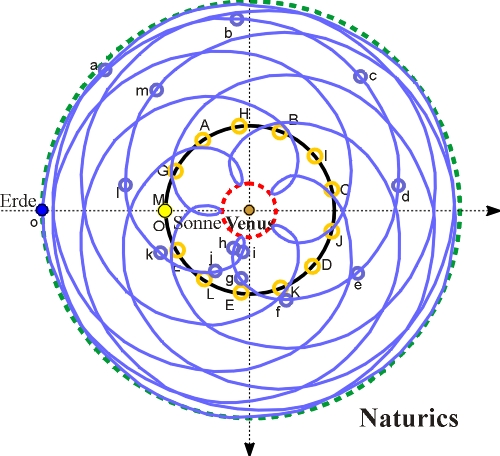
In the traditional view, we can imagine the three celestial bodies Sun, Earth and Venus, for example, in a constellation like the one shown in the diagram below, where the black circle is only an auxiliary construction, just like the traditional orbits of Venus and the Earth around the Sun; in space there are no circles.
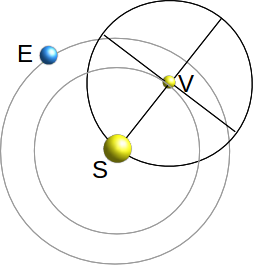
But I have chosen this particular position of the three celestial bodies because such a position of the Earth makes it possible to look at Venus at the moment when Venus appears as far as possible from the Sun, so that Venus is still well visible from Earth before the Sun rises in the morning (or even sets in the evening). We see the same position of the three bodies on the rosette orbit here below, where each pair of the Earth's positions (small letter by blue circle) always remains at the same distance from the corresponding position of the Sun (large letter by yellow circle). In our selected case, these are the positions l of the Earth and L of the Sun.
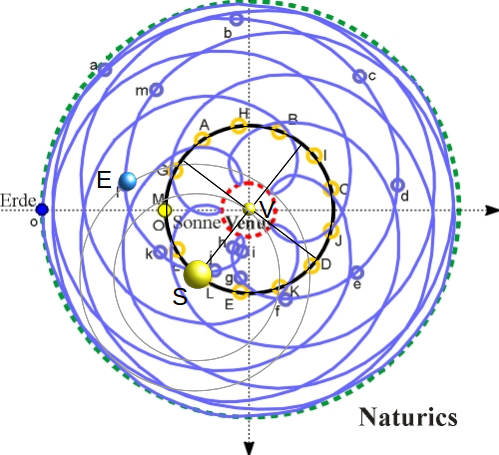
Let us now imagine that a relatively small comet comes into the centre of the Solar System from the side of Venus. In this case, it will certainly land on Venus rather than on the Sun, because in Venus it "feels" the entire mass of the Solar System.
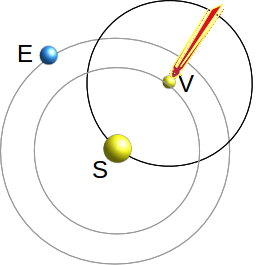
Observers on Earth would see the image roughly as the photo montage below shows. In the case of a small comet, the tail is not particularly bright and long, so that only the "learned" eyes would recognise it.
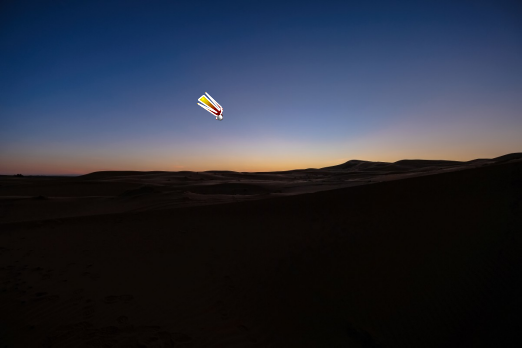
The idea presented here is just another hypothesis, of course, but it seems more likely to me than any of the others that would be proposed so far. We won't get proof until the next comet hits Venus. At some point, surely. And hopefully, in fact, Venus will then be able to get between the comet and the Earth in time.
From the Star of Bethlehem to the Stars of Earthly Mayhem, let’s hope civilisation gets its act together so we can weather the impact should Venus “decide” to prematurely exit centerstage (left or right), lol.
Thank you for this thoughtful and intriguing hypothesis, Peter Naturics. The heavens are the new television and who knows what amazing programs it has in store for our future visual pleasure!